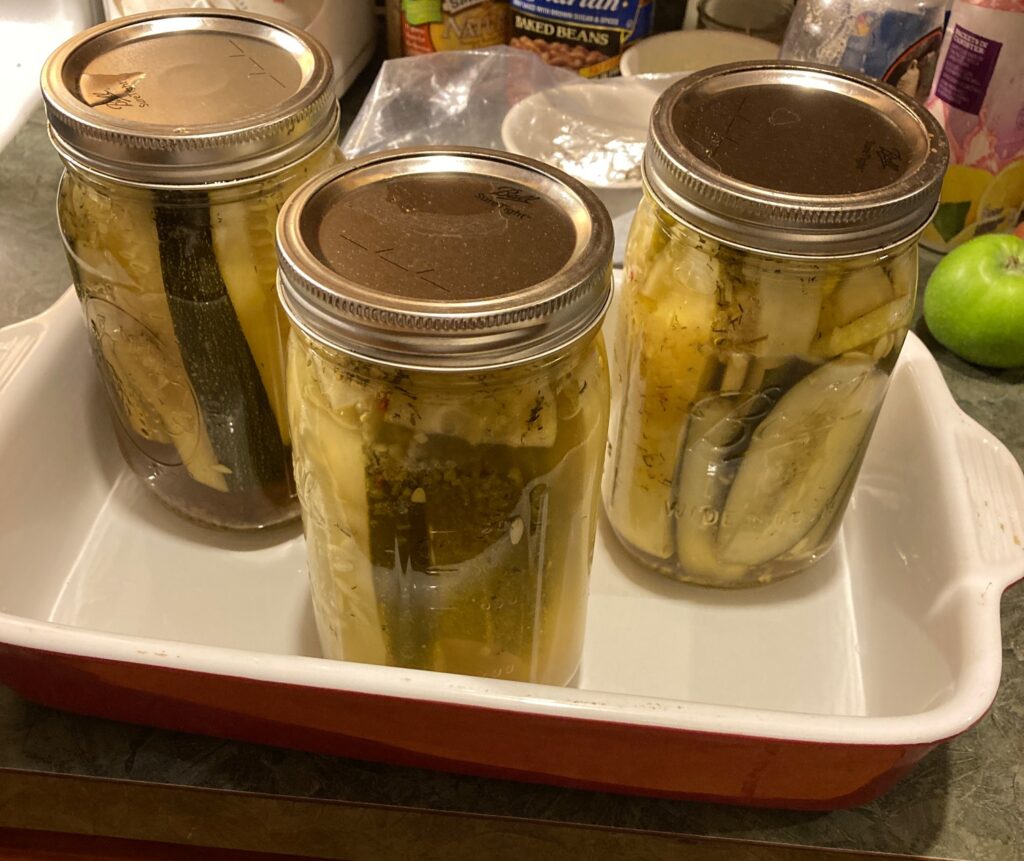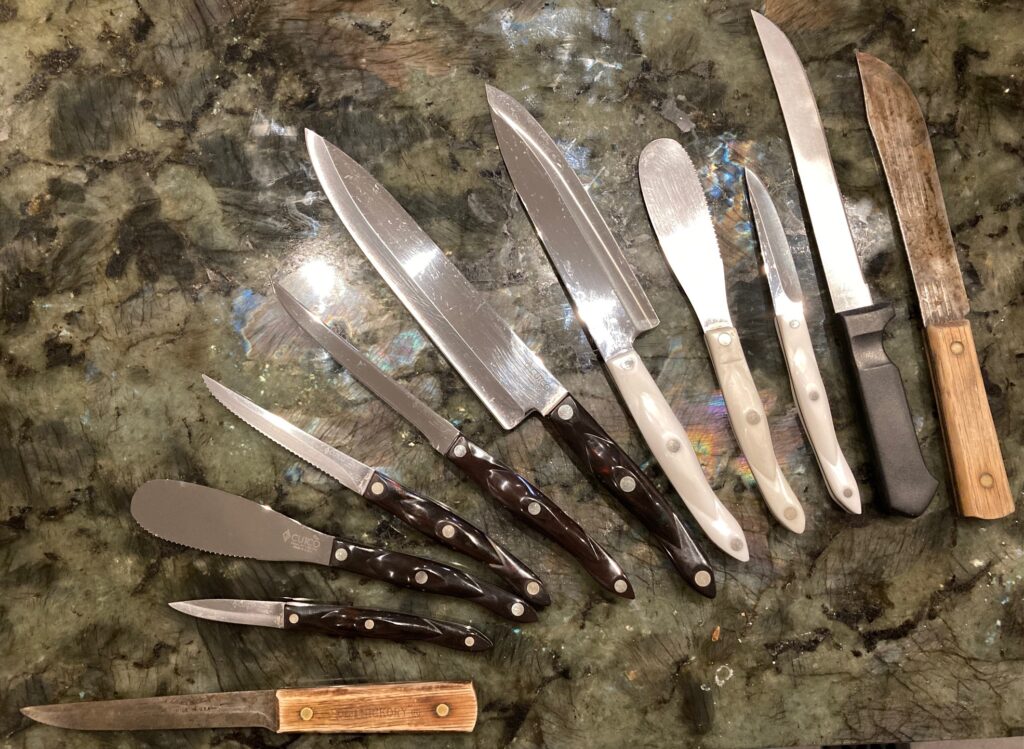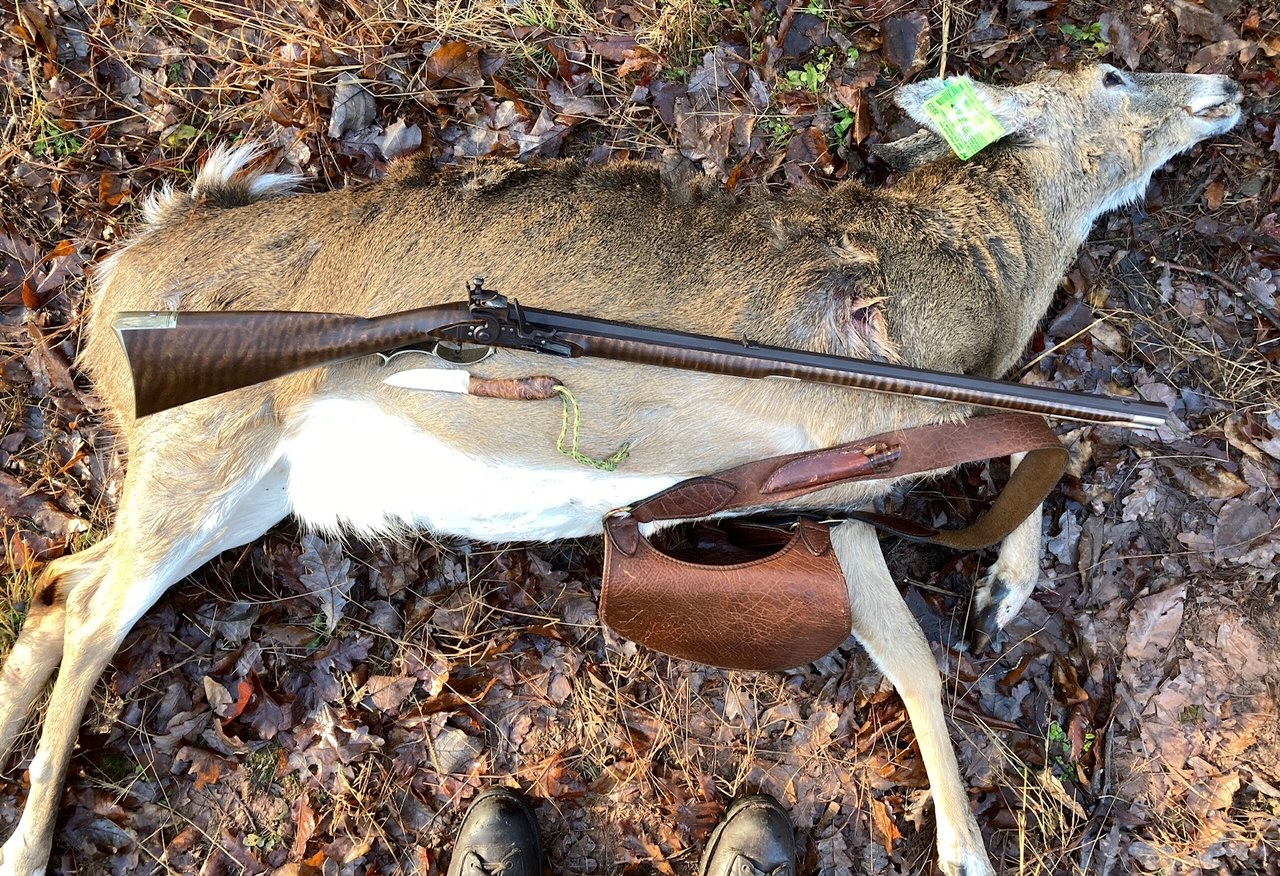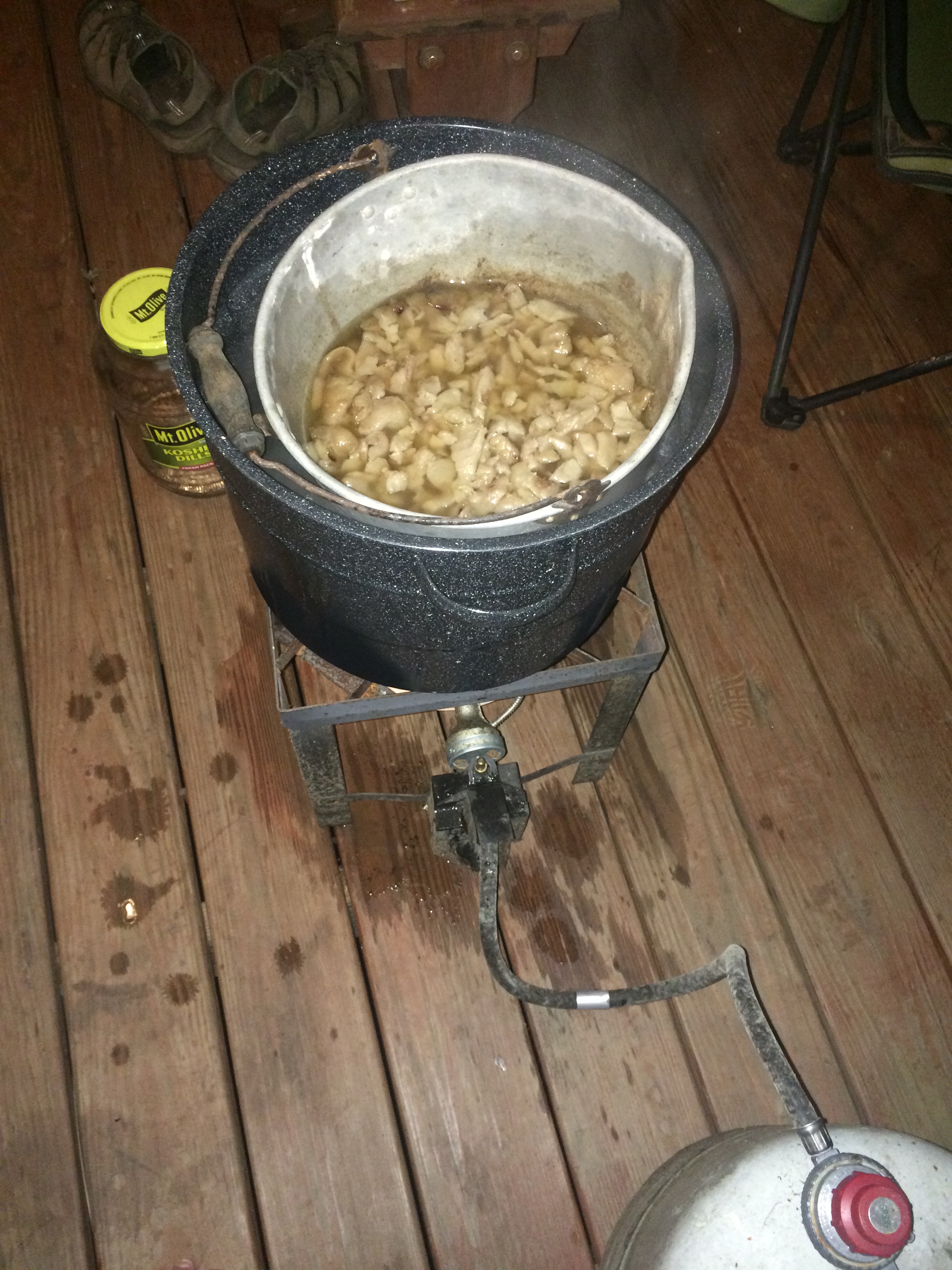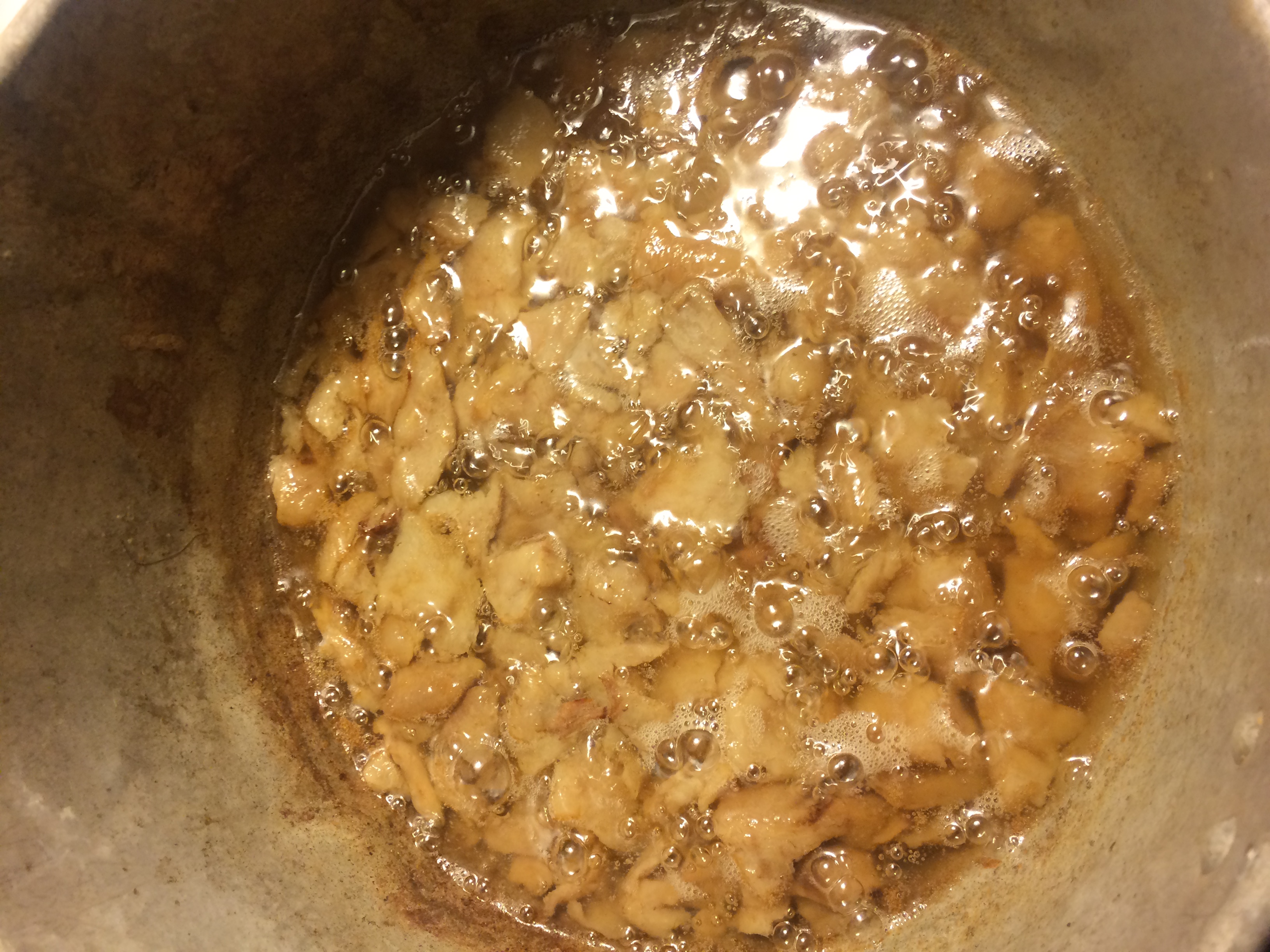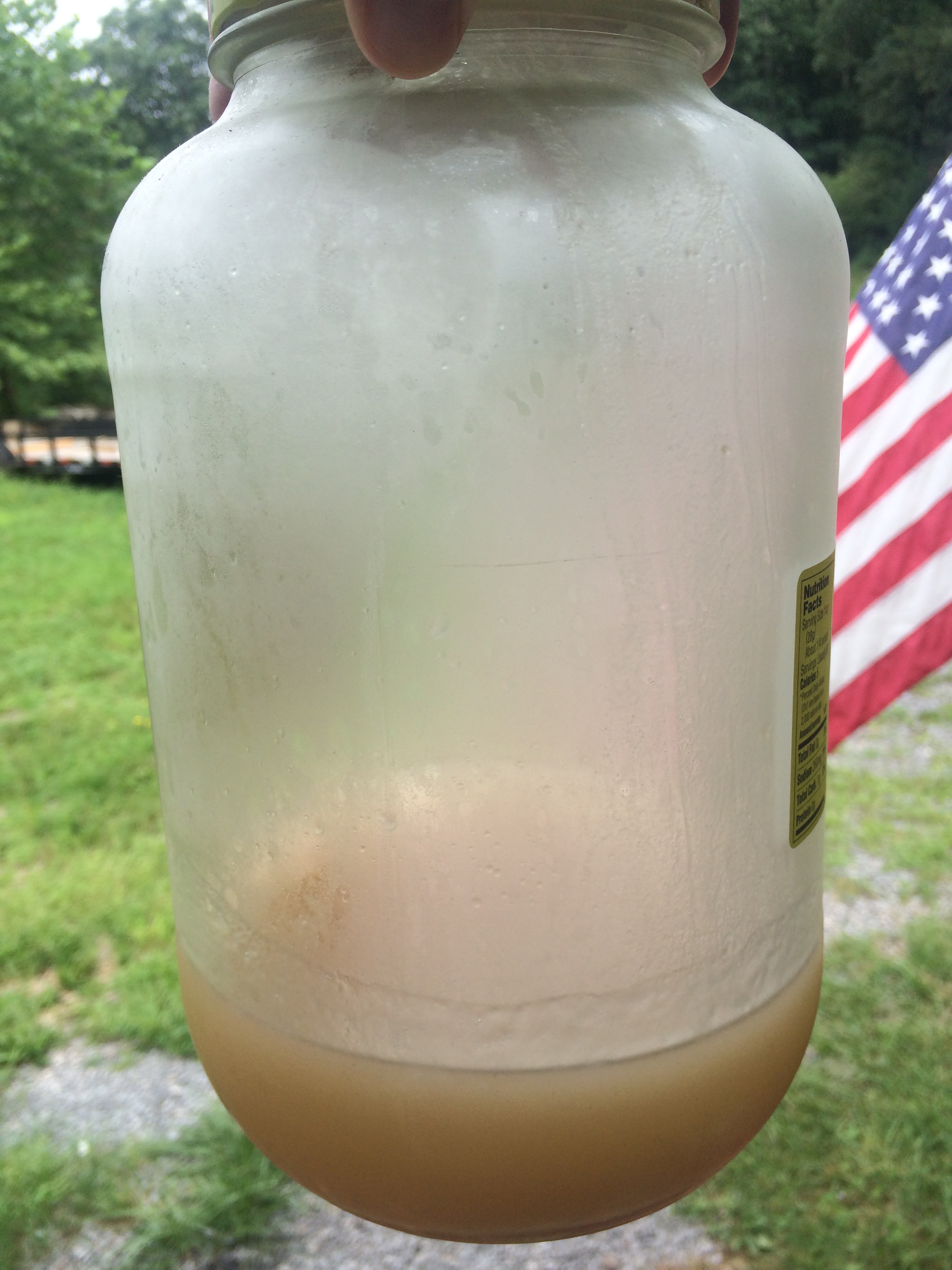Posts Tagged → meat
Do deer processors give you back your own deer?
Pennsylvania rifle season for deer is nearing the end of its second and concluding week. On average, Pennsylvania hunters annually kill 400,000-500,000 deer, and I would just hazard a guess that 2/3 of those carcasses are taken by the hunter to local deer processors.
Tonight, deer processors across Pennsylvania are working triple-staffed and double overtime to process the hundreds of thousands of deer being brought in by successful hunters.
A perennial question asked by both new hunters and well seasoned is “When I pick up my deer from the processor, will it actually be my deer I am getting, or will it be someone else’s deer?”
There are two certain answers to this question, and I base these on my own experience and the experiences of many friends and acquaintances.
First answer, Maybe. Depending on what you want done to your deer, you might get back 100% of your deer or you might get back 75% of your deer, with the 25% difference being parts of other people’s deer. If you just want real simple cuts, basic steaks from the backstraps and the hams, and roasts from the neck, leg, and shoulders, then you stand a better chance of getting your deer back. This is because it is almost as easy for the processor to cut your deer up into these basic cuts with a bandsaw and a boning knife as it is to grab whatever oddball cuts he has on hand to fill your order.
Second answer, when ordering sausage and hamburger, is absolutely No. This is because deer sausage, pepper sticks etc. are made from various trimmings and random pieces of deer as they are brought in from the very beginning of the archery season, based on the kind of demand that processor has experienced in the past. Additional batches of sausage are made as demand increases towards the end of archery season and into the rifle season. There is just no way that your deer can be turned into its own sausage mix. Your deer might be contributed to a big pot of deer trimmings destined for sausage, and you might be getting your portion of that sausage, but that sausage just isn’t going to be yours and yours alone. It will be a mix of various deer brought in the same time as your own.
I cannot tell you how many times I have gone through the expense of having my prize deer turned into beautiful shrink wrapped cuts at a processor, only to discover that the cardboard box I received my order in is short at least ten to fifteen pounds of venison (from a huge buck). And worse, some random pieces have been thrown in a try to make the balance, as the processor guesses it. And some of the packages have been frozen a long time. And the same cuts of meat are colored differently, as though from different animals.
The truth is that if you want to eat your deer, then you must either butcher your deer yourself, or get together with buddies and butcher all of your deer together.
Butchering a deer by yourself is much easier than most people think, especially if you are willing to cut up the backstrap and hams into basic steaks, and then grind up everything else for hamburger or sausage. In fact, I am about to take a deer I shot today over to a friend’s house where we are going to butcher it in his garage. This is going to be his first experience doing this, but I am sure it will not be his last time.
With buddies, you can pool your odd trimmings and leg meat for sausage. One or two guys or their wives run the sausage/ hamburger grinder and filler, and by the end of the weekend the sausage has been cooked/smoked, and everything is all done simultaneously. I have seen a historic hunting camp in Elk County that had the most impressive kitchen and butchery set-up, including scales for weighing both the whole deer and the various parts and cuts. This is nice so that the guy who shoots a 60-pound yearling gets his deer, and doesn’t unfairly get a bonus pay-out taken out of someone else’s 120 pound deer. Unless this is the way everyone agrees to work together: Everyone goes home with more or less the same amount.
Nothing against the deer processors, they have an important role to play. But the question asked in the beginning can only be satisfactorily answered by doing the job yourself, and I can say from long experience that butchering a deer is easy and gets faster and easier the more experienced at it you become.
Why we share wild food with each other
People around the planet enjoy sharing wild food with one another, and we always have since God above evolved our species, however it is He evolved it. It is an innately human trait to both enjoy giving and receiving wild food.
Wild food is a broad category, but it excludes anything we buy, especially in a big store. Foods from stores are almost always, or are always, plants and animals raised in intensive industrial environments, replete with chemicals everywhere and in everything. Wild food usually includes fruits, herbs, and vegetables grown in our own gardens; fruits we have picked in the wild, like berries and apples; and any wild game meat or fish we have harvested. Chemicals are either non-existent or are naturally occurring in minute amounts from the native soil.
All around the planet people put a high premium on wild harvested meat. In Africa and Australia, “bush meat” is highly valued as fresh, nutritious, free of human-injected chemicals and hormones. Everywhere bush meat is eaten, it is traded in lieu of money. And when a European bites down on a size 8 piece of shot in her forkful of grouse recently from the Scottish Highlands, where it was shot on a drive, hung for three days in a cooler, and then shipped off to Spain, Germany, England, or France, she knows she is eating something special, and it tastes even better. The same is said for the meat of hunted red deer, and occasionally wild boar, both of which are highly prized foods served in restaurants and home kitchens across Europe.
Wild food is better for us, we all know that, both in terms of what is in it and also what is not in it, because (except for poached bush meat from at-risk wild animal populations in Africa) it is environmentally sustainable. It also tastes better, because it has grown up under natural circumstances. Giving and receiving it as a gift is a symbol of real friendship and caring. Wild food is something most Americans can participate in, especially as growers and givers, and so I hope that someone reading this is inspired to take a corner of their luxury status symbol yard and turn it into an unruly food garden. The pleasure of sharing the harvest with friends and neighbors is quite enjoyable.
Humans began as hunters and gatherers and we remain such, even with our thin veneer of civilization inartfully separating us from the wild world around us. Much of our innate gender differences are centered on what hunting and gathering was done by our ancestors over the past few hundred thousand years. Gathering food by hand is a natural and innately human thing to do, and most people find gardening calming and enjoyable. I guess being a real human and not a false, contrived human can be pleasurable.
Last month I picked over six pounds of blueberries and another five pounds of blackberries and red and black raspberries, about a hundred pounds of peaches, and about fifty pounds of apples. I won’t share these hard-won prizes with you by the fistful, because then the berries would all disappear within a few minutes. Rather, I will share them by mixing them into muffins, pancakes, cobblers, pies, and preserves spread onto toast, ice cream, and cakes. This way these gems last all year long, and everyone gets to share in them.
Aside from being cleaner and tastier than industrial foodstuffs wrapped in plastic and styrofoam, wild food has the benefits of bringing us closer to nature, closer to reality, closer to self-reliance and self-sustainability, and closer to people we might not normally encounter. Nature can be the sharp berry bushes we must reach through to pluck our juicy berries, and it can also be the mother bear and her cubs waiting for you and me to clear out of the scratchy berry patch so they, too, can feed on Nature’s bounty.
Nature here can also include a variety of destructive garden pests like squirrels, rabbits, groundhogs, and chipmunks, and learning to cope honestly with these artificially overabundant animals teaches us important lessons about reality versus luxurious and silly childish feelings and notions of animal welfare that are terribly destructive.
For example, artificially high populations of pest species, like squirrels and ground hogs, spread high amounts of disease and physical destruction. And when vegans strut and brag about their reliance on industrial monocultures like soy beans, they ignore the tremendous environmental and habitat destruction wrought in their vegan names. There are significant environmental costs to veganism and vegetarianism that could be offset if those adherents participated in wild food, like growing their own and trading/ bartering for what they cannot grow themselves. Few things are more annoying than listening to someone from a wealthy lifestyle bragging up their veganism/ vegetarianism while simultaneously tearing open plastic wraps and environmentally damaging containers containing industrial foods. Food isn’t just about what you put in your mouth, it is very much about where it comes from, where it was grown and where it lived before your credit card brought it home.
Hunting in America and Canada produces millions of pounds of fresh, clean, natural, wholesome wild meat for more than just the people who pull the trigger. Hunters Sharing the Harvest is a well known program that enjoys widespread support from both givers and receivers. Schools, neighborhood soup kitchens and homeless shelters, and just simple low-income people, all benefit from receiving this wild meat. And farmers and forest owners benefit from having artificially overabundant deer and hog populations thinned out so their crops can grow in peace.
For those silly people who oppose hunting, jiminy crickets, people, wake the heck up. You are not living in a fairy tale book, and you are having your own huge impacts on the planet around you. An animal’s life is not just measured by how it died, but also how it lived. Almost all industrial meat comes from factory farms, enough said. However, wild meat comes from animals living their lives to their fullest before quickly falling over dead from a bullet or an arrow. Any modern educated human who believes that wild animals die naturally under antiseptic and peaceful conditions is a fool, enough said. Recreational and population management hunting (not poaching or market hunting) is a perfect way to provide environmental protection to wildlife habitat, conserve vulnerable wildlife populations, and harvest natural, sustainable wild food.
By mid-December of this year, I will have probably shared over a hundred pounds of wild meat, mostly venison, occasionally waterfowl, turkey, and small game. The people who receive my gifts of deer meat (that I have shot) are always grateful, and they often report back to me on what they made with the gift, who they shared it with, and how delicious it tasted. This exchange is true friendship, and in a politically fractured world, we all can use a little more friendliness, a few more friends. Wild food is my way of contributing.
In an hour I am dropping off a bag of peaches from my own trees, and picking up a bag of pears from my friend Ryan’s trees.
What wild food are you going to grow or harvest, eat, and share? If you have a big lawn, put away that lawn mower and start growing your own food. You will like it, I promise.
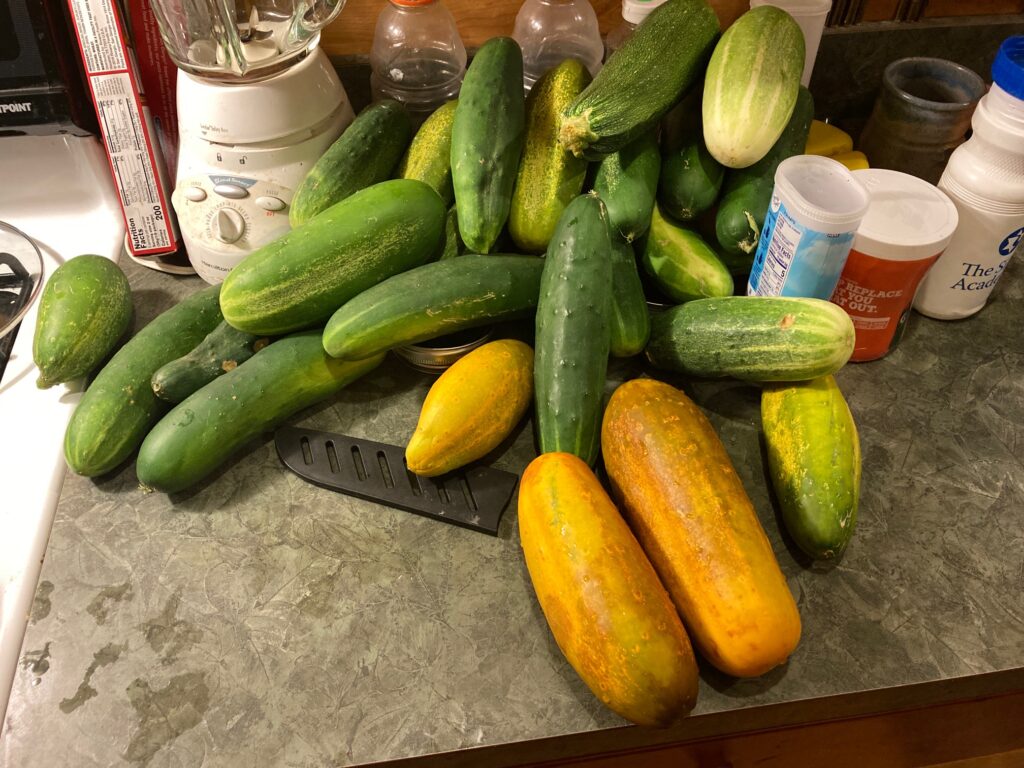
cucumbers from our garden don’t cost a dollar apiece like in the stores, and they are fresher and have no chemicals. Our home made pickles are far tastier than store bought, and have no chemicals. We use the overripe ones to make bread and butter pickles.
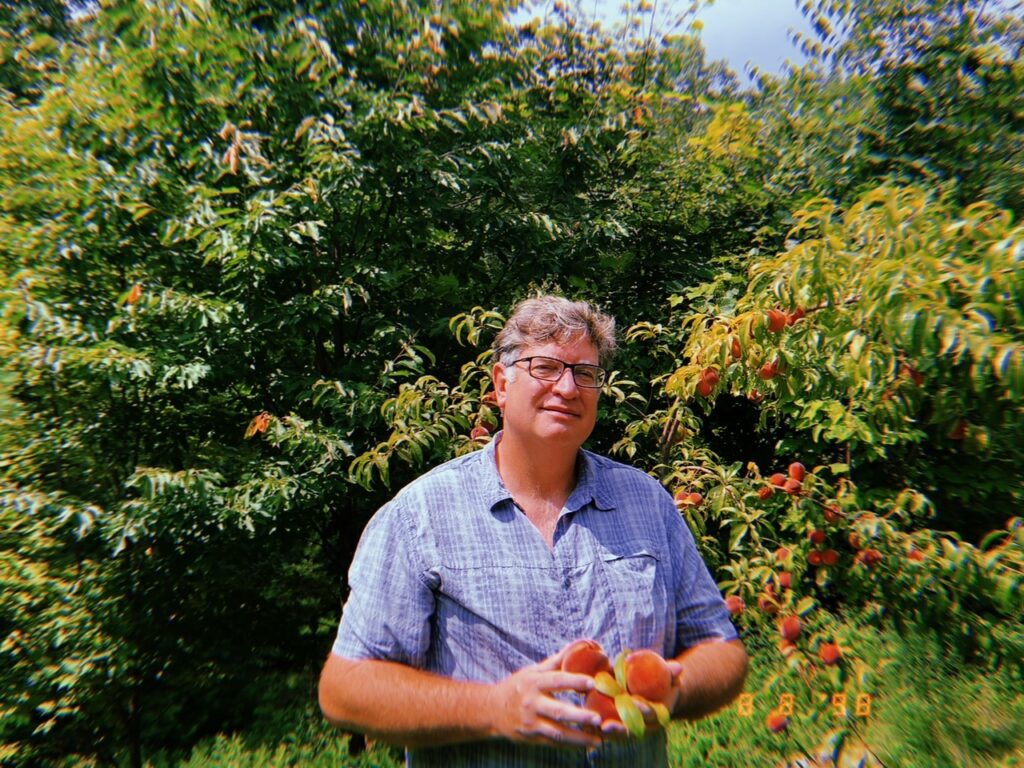
We have a bunch of peach trees. If the bears and the squirrels don’t raid them, we get to enjoy them, and cook with them, all year long
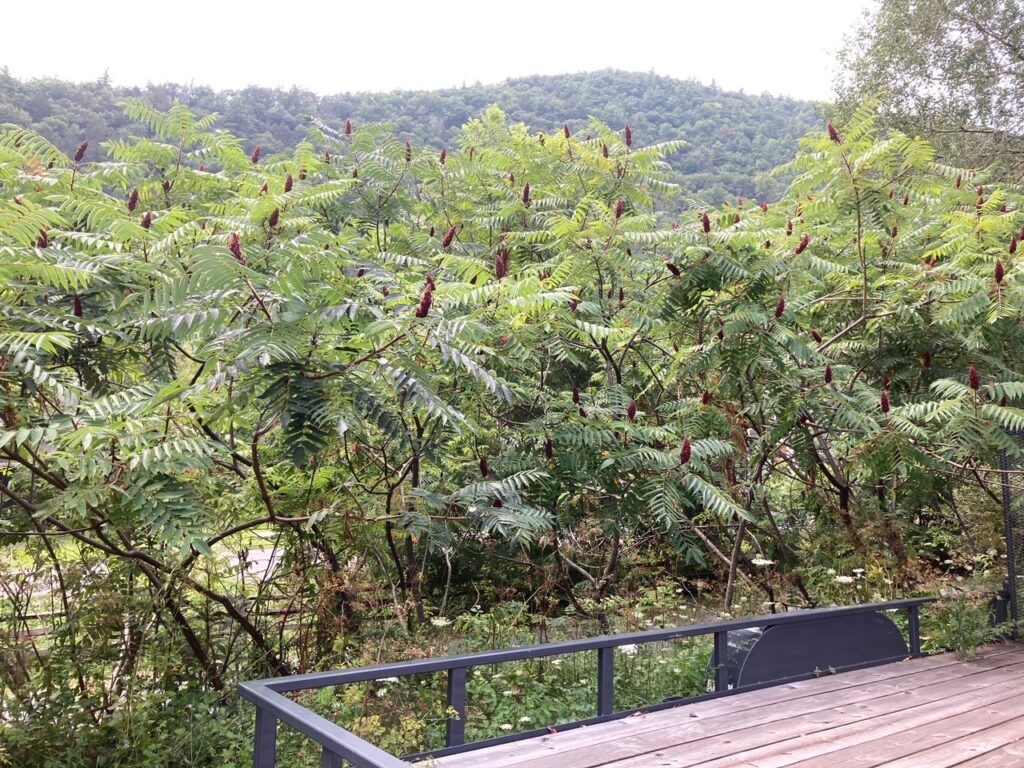
Sumac grows wild everywhere. Steeping a few heads in a bowl of warm water provides the most delicious drink possible. Chill it, serve it with sugar over ice, sumac tea is free, easy to forage, and chemical free
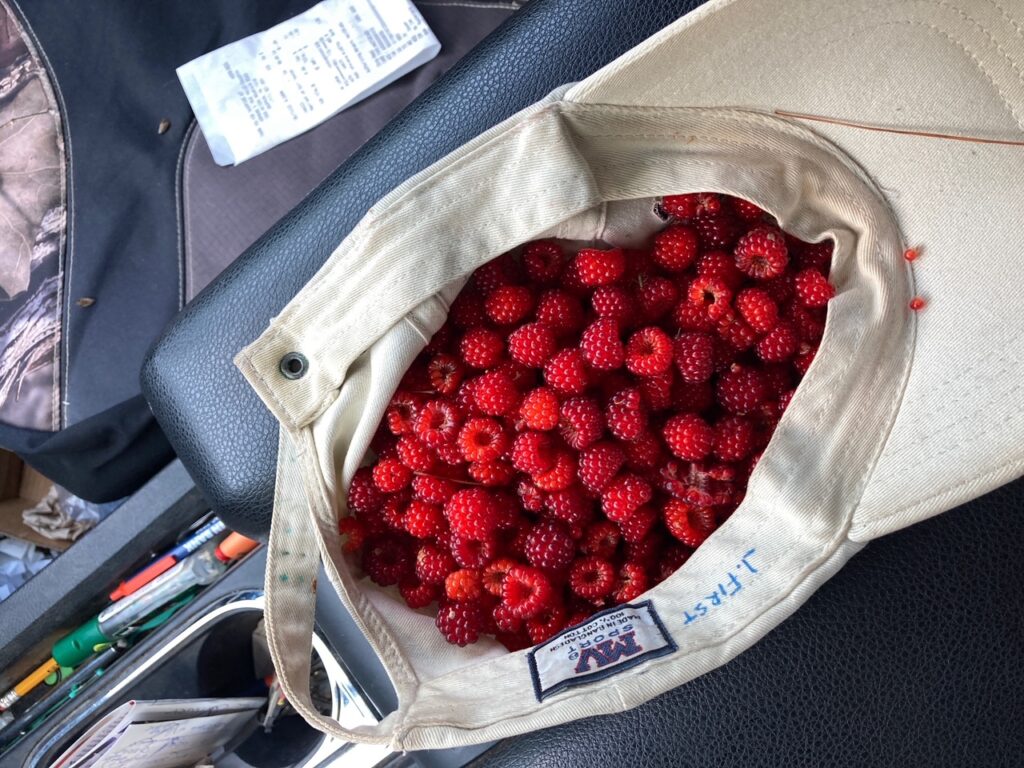
A hatful of red raspberries I foraged in July in the shrubbery of a public parking lot. IN a store you would pay twenty dollars for these wild ones, and they would be half as good. Go forage and pick your own food
That curious Rural-Urban divide thing
That curious Rural-Urban divide thing is really bugging me, and I want to share some personal experiences and observations about it with you.
If we could just please get away for one minute from the Justice Sonia Sotomayor bribery scandal, please. Yes, far-left Justice Sonia Sotomayor took over THREE MILLION DOLLARS IN BRIBES from Penguin Random House to protect Penguin Random House when their critical lawsuit arrived before the US Supreme Court, and no, Sotomayor did not step aside and recuse herself or anything high-minded like that. She just blatantly ruled in favor of her three million dollar friends at Penguin Random House books, like nothing was the matter. Even though this is very much The Matter because bribes are a big no-no.
With all of the talk these days about ethics on that Most High and Illustrious Court, we would think that Justice Sotomayor’s blatant and impeachable criminality would be the main public subject of ridicule and hate these days. But we would be wrong, because evidently America’s urban people are really hating the rural people right now, instead, and they would rather discuss Naughty Rural People than that crooked, lying, cheating, impeachable Justice Sonia Sotomayor.
OK. So be it.
Seems like the general happiness, low crime, and high quality of life among rural residents is drawing the vengeful eye of the jaded urbanite. Rural people hunt, own lots of guns, commit almost no crimes with said guns, and yet are being told by the angry urbanites that they must nonetheless give them all up, and get in line for their creepy crawly bug breakfast.
Also bothering the Most High, Superior, Better Edumacated and Definitely Unhappy urbanites are things like “rural people smell bad”, “rural people drive large pickup trucks that expel a lot of carbon”, “rural people cut down trees and own chainsaws”, and a real big complaint is that rural people drive tractors and spread animal manure on fields. Pee-yew it stinks and is dirty! Stop it!
I know that in a rural bar a person could sit down over a cold Coors Lite or a delicious Yuengling Lager and have a reasonable, quiet conversation with a clueless-but-judgmental urbanite about how the rural people grow all the food and fiber and pretty wood that the urban people eat and use, and that rural people fill their stomachs with clean and cleanly killed wild game instead of mass-murdered industrial factory beef and chicken, and that rural guns hardly hurt anyone. But such a conversation is about as likely to happen as Justice Sotomayor is likely to resign her corrupt big ass from the US Supreme Court.
Liberal urban elites are similarly mysterious to rural hunters and their neighbors. For example, most American urban areas are crime ridden hellscapes with high taxes, high cost of living, low quality of life, poor public services, and yet…all the “educated” “knowledge jobs” are located in these sh*tholes. Supposedly these catastrophic urban areas are elite and nonetheless superior to rural places. They just are.
The real question I see is whether or not an urban person can overcome their prejudices, rise above their own fragile ego, and move to a healthy mental place (please do not move to my physical place, unless you become a NRA Life Member) that works for them and for rural people. The live-and-let-live nature of rural life tells us that rural people don’t sit in judgment of others, they are simply happy when left to themselves. It’s a pretty cool way to live, and mystified urban people could learn a thing or three from them.
Step one in your urban person learning process? Leave us the hell alone. Mind your own damned business, quit criticizing us, and stop telling us how to live while your own communities and people are in massive disarray and melt-down.
Step two, if you move to our rural communities because they are pretty, undeveloped, safe, and friendly, do not continue to vote and behave the way you did in the urban sh*thole place you just ran away from. Your former urban jackass lifestyle ruined your former hometown, and we don’t want any of it polluting our little slice of heaven out here in the sticks. So, if you move to a rural place, register as an Independent voter, buy some guns, learn to hunt, become self-reliant and less judgmental, and learn to hear what other people think. You might come around to thinking a US Supreme Court justice taking bribes is a bad thing.
Life and Love of the Knife
Since God created us humans, either in one quick master stroke or through a series of evolutionary steps (I don’t know which one and I don’t really care, because God is all powerful and can do anything He wants, and all we puny humans can try to do is figure it out as we muddle along), we have had a love affair with sharp edges. Blades, that is, which give our amazing but soft and weak hands the ability to cut, slice, stab, and pierce dangerous foes and animals, and render them into delicious roasted brontosaurus steaks. As Mogli says in “A Jungle Story,” his antagonist, the massive male tiger Shere Khan, may have his big teeth, but “I have my own tooth,” a sizeable steel knife blade affixed to a sturdy and dependable handle, with which Mogli is indeed a significant foe to all who would eat him.
To humans, the knife in all its forms – skinning blade, meat slicing blade, spearing blade, or stabbing sword blade – is our tooth, claw, and fang. It is our defense, a lifeline, and third arm in a world where most of the critters we have hunted, eaten, and clothed ourselves with often have a mouth full of knives as well as heads and hooves adorned with sharp and pointy edges, any one of which is instant doom to us. As a brief visit to the dinosaur and modern reptile exhibits in any respectable museum will show, we humans inhabit a world where history has had most of our battles and warfare with men and beasts alike determined by who had the bigger, faster, longer, sharper knife blade.
The Pleistocene is where modern humanity and our knives and spear blades came into Yin and Yang fusion, resulting in the extermination of even the largest and most dangerous of wild animals. And well into the 20th century, men everywhere across the planet daily adorned themselves with blades both practical and beautiful. In a world that is still always dangerous, blades have always represented us humans, and men in particular, as both useful and dangerous.
So is it any surprise that even today, in our sickly society filled with Toxic Femininity, men, particularly men, still have a love affair and deep personal connection with knives and blades of all sorts? It’s almost spiritual. Knives and sharp blades have been our constant companions since our species gained consciousness, and knives have been all that stood between us and death for over a hundred thousand years. Often in a hunter-gatherer society, a good knife is all a man needed to live a comfortable life. Nowadays, we habitually carry small pocket knives by Case so that we can accomplish small home chores easily. Serious blade length reduction! How far we have fallen! Are we still men, armed only with our tiny folding pocket knives?
I say yes, we are.
Because like so many millions of others, I am a masculine man and a not a Low T feminized and pathetic freak of self-loathing nature, and because I am an outdoorsman, and because I am against being or feeling helpless and defenseless, I use sharp blades all the time. A sharp edge is always on me or near me, so that a threatening saber toothed cardboard box can be quickly broken down and put into the recycling bin. That always makes my woman feel like the tipi is properly sorted out. Like thousands of generations of men (M-E-N of nose, ear, and back hair variety) before me, my appreciation and love of the knife has resulted in a life of the knife, and I celebrate that. It keeps me thoroughly human.
If you are a guy (born a man with a penis) or a practical woman (a human born with a vagina and female reproductive parts), or even someone caught in between both genders and yet nonetheless afflicted with a strong streak of self preservation and practical ability, I strongly suggest carrying the largest and most robust blade you can legally and practically use every day. Or just get some CutCo knives for your kitchen. It will make you feel like a million bucks, at night your hands will naturally paint beautiful primitive cave art on the walls of your basement, and you won’t ask yourself where that innate skill suddenly came from….because you will be acting organically like a natural and properly kitted out human being. These things naturally flow from one to the next.
Just be careful not to get too carried away with this knife thing. Buying knives easily becomes a habit or even an addiction. All for the right reasons, of course. It is hardwired in us.
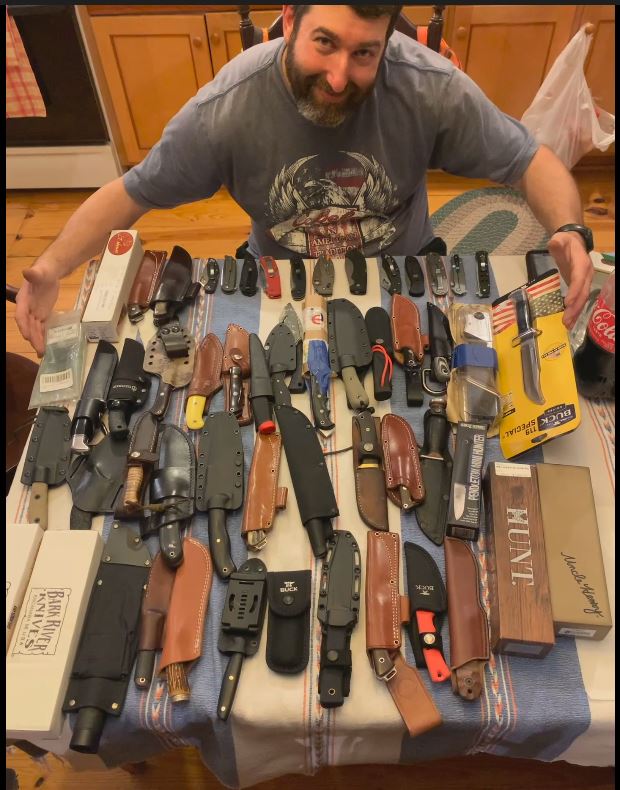
My buddy Irv has a knife problem. As an electrician, he has many opportunities to seriously test all kinds of pocket knives and knife steels. But he yearns to strap a dozen sheath knives on and prowl the woods. He has significant back hair, too, because he is a man.
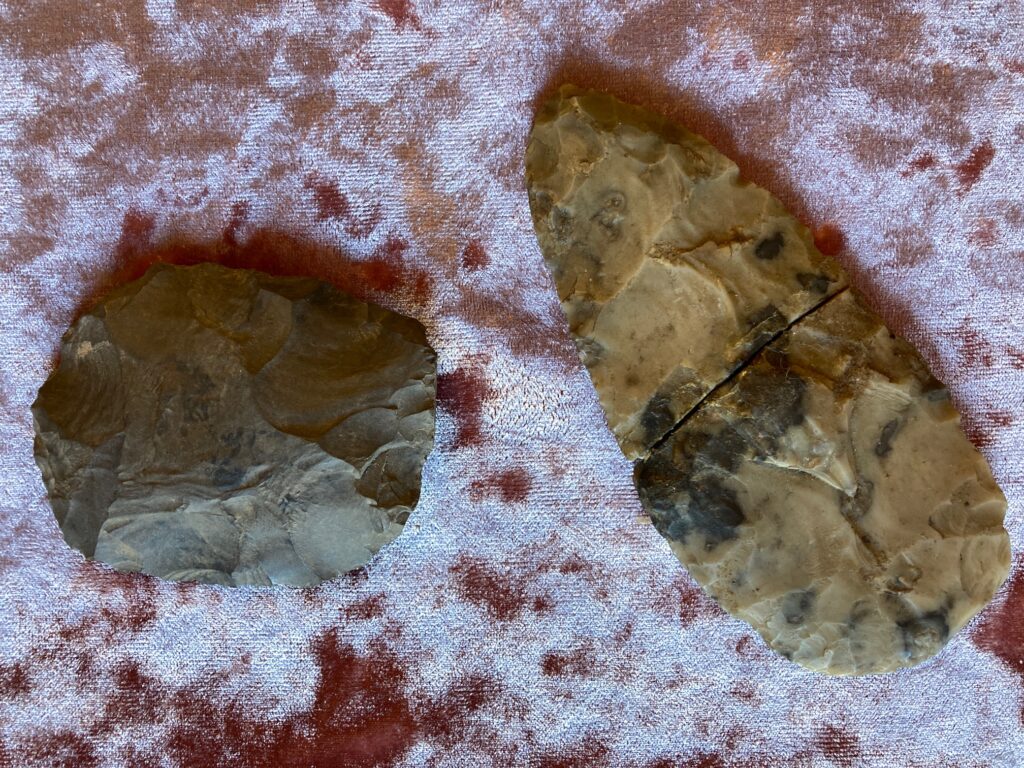
Two original Stone Age tools. A flint hide scraper (top) and a chert butchering knife from Upstate New York
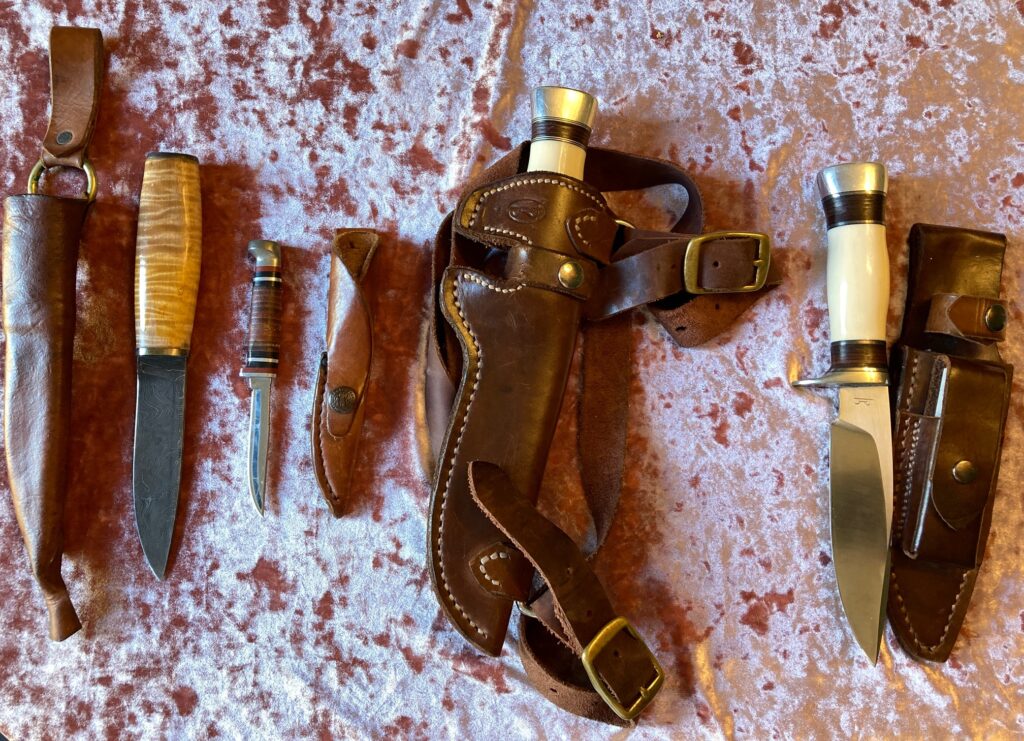
A very small slice of the hunting knives we have at our reach here, including a matched ivory micarta handled pair of Randall copies for my son and I by Perry County maker John Johnson each complete with over-the-shoulder baldrics and belt sheaths.
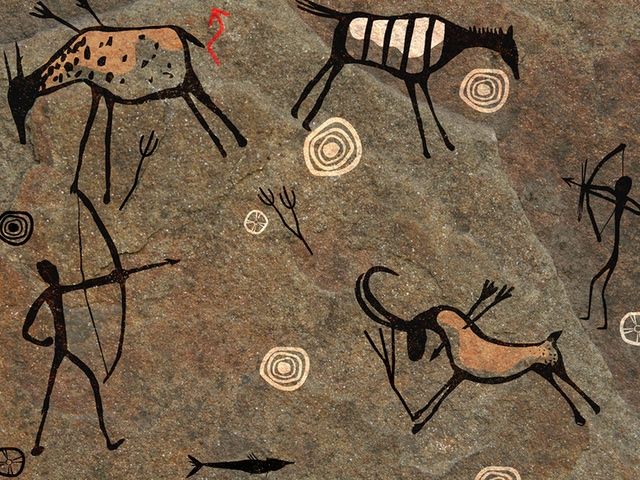
Pronged spears and sharp arrows (sharp blades on flying sticks) from about twenty thousand years ago. Still the best hunt around.

Super cheap WalMart special faux Damascus steel Japanese style kitchen knife is still very sharp and an an incredible tool
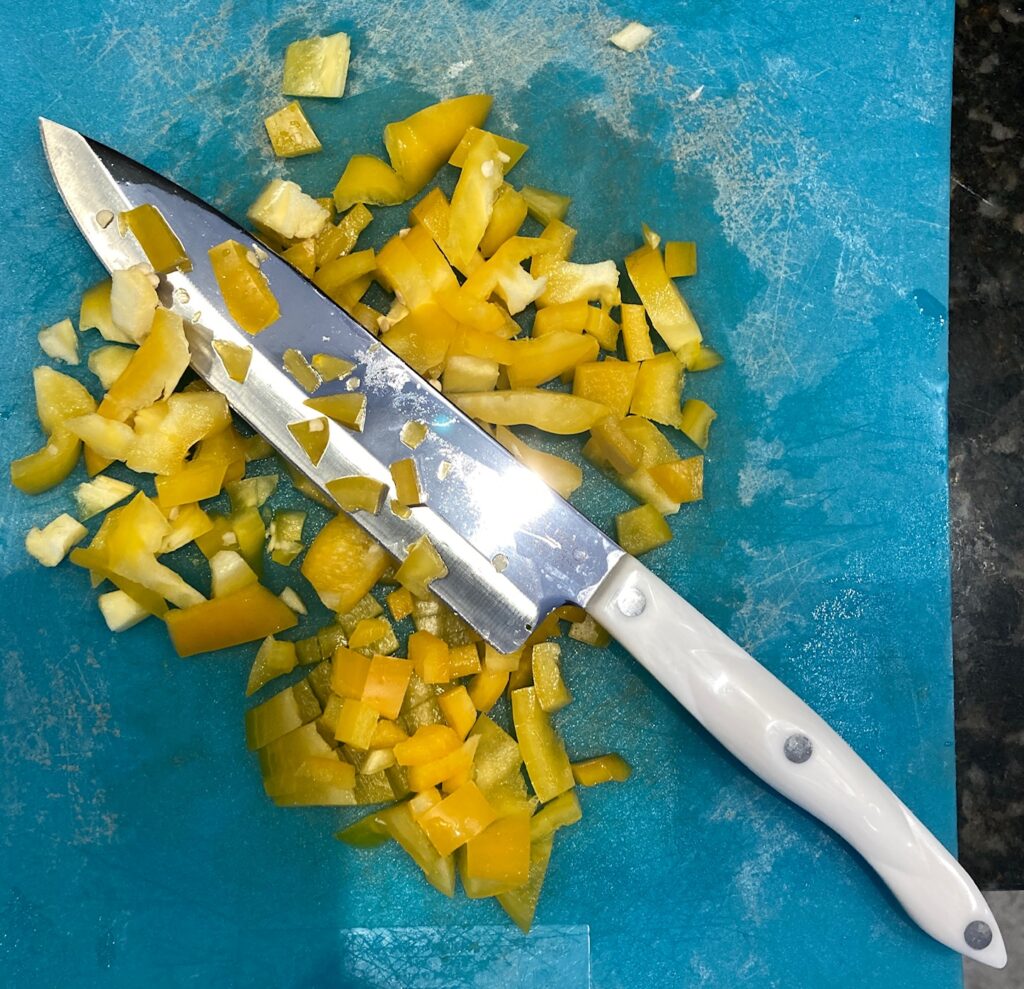
USA-made CutCo, definitely not a cheap kitchen knife, with excellent blade steel and bombproof handle material. Highly recommended.
If you are going to hunt flintlock, you must practice, practice, practice
Flintlock hunting season ended in southeastern Pennsylvania two weeks ago, and for those hunters who had either not yet harvested a deer or, who, in the alternative, are usually highly successful, it was a last ditch chance to fill a doe tag or the unused buck tag. I know full well from my own feeling, as well as from hearing from other hunters similar to me, that despite having a good season (I killed four deer in two counties. One with a percussion rifle in October, two in rifle season with an open sight 308 Ruger RSI, and one with a flintlock in January), that sense of lost opportunity hangs pretty heavy. Perversely, the more successful a hunter is, the more successful he feels he must be with all remaining tags and opportunities.
In the old days (of my youth and long before then) that lost opportunity was called the “horse collar,” and however we might describe this nagging feeling, it can be a pretty tough driver. Guys (definitely guys only; women are too smart or doing too much real, important work to act this way) will just throw themselves into the late flintlock season hard. That unused tag weighs heavier and heavier as the season winds down, the deer get so much more skittish, and we feel the last opportunities to prove ourselves slipping through our cold gloved fingers.
On top of the usual limitations listed above, I unnecessarily handicapped myself badly before flintlock season started: I failed to practice shooting with my flintlock ahead of time. If there is one hard fact chiseled in granite about flintlocks that everyone knows, it is that they require regular practice in order to shoot them half decently. Especially before hunting big game with one. Not just because they require lots of little pieces of metal and a rock to all quickly and seamlessly work together to make the barrel go BOOM, but because a big flash of flame and smoke goes off right in the shooter’s face.
And that big flash in the powder pan in your face makes those people who have not practiced and become used to the flash flinch badly. It is natural to flinch your face away from a fiery explosion. And when you flinch, you are sure as shootin’ gonna miss. Hence the moniker “flinchlock.”
And flinch-miss I did this past late December and early January. A lot. Missed a deer in Lycoming County, missed a whole bunch of times in Dauphin County, including a dandy buck. In fact there was one doe I missed three times on three days in one week with two different flintlock rifles, all from close range. All because I had not practiced before the season.
When I finally did take a deer in the late season, it was because I had patterned him, a huge buck, all year, and I had just encountered his tracks and knew where he was likely to come in to investigate the smell of a late season doe in heat. And in fact he did show up, right where he should have come. At first he was just a faint shadow within many shadows in the big forest’s early morning half light.
I wasn’t even sure he was a deer when he first showed up. He just appeared, then stood behind trees, then behind a bush, looking around intently, never offering a good shot on his vitals. When he finally stepped into a shooting lane, I knew it was him only because of his enormous body and the improved daylight that let me take in the steer-like curves of his shoulders and hindquarters.
His huge 150 inch class antlers had prematurely dropped (which this year seemed to be the rule across northern and even parts of southern Pennsylvania), and then he, too, dropped. The round ball hit him square on the ribs and took out his lungs and the very top of his heart. After a late season of many misses, it is OK to admit that I only hit him because I had the rifle on a solid rest and I was seated. And that by that time I was not surprised when the flash went off with the BOOM of the rifle, but rather I was cool as hell and stayed looking straight down the barrel with good hold-through, watching him kick a few times through the smoke cloud that enveloped us both.
I do not name bucks, because it does not appeal to me to do so. But I still knew who this buck was from having encountered him several times over the past eight years. Several years ago I saw him twice in bear season, and his rack was good. In 2021 he came in to investigate some doe pee on a remote hillside, alongside a smaller deer with an unbelievably symmetrical ten point rack. I took the perfect rack and watched the bigger one run off. By January 2023 he had not an ounce of fat on his entire brute body whose hide will square twelve feet. He also had a huge rotting hole in one hoof (his hooves were each the size of my hand), and no teeth left on his jaw. This sagacious deer, whatever his name was, had attained the rarity of great grandfather status in the woods, and regardless of how cagey he was, his days were numbered. One way or another, he was destined to die soon.
Despite looking several times in the right places for his shed antlers, they did not show themselves. Possibly because a utility line right-of-way clearing crew had come through ahead of me. But who cares about finding his big antlers, right? His immense estimated ninety pounds of meat is right now feeding two families, and I shook off the horse collar from all the prior missing I had done.
Learn from my mistake: Practice, practice, practice with your flintlock before the season. And then the day before season opens, snap a couple of pans of priming powder on an empty barrel while aiming at a picture on the wall. Just to keep from flinching and missing.
And one more thing: Flintlock hunting attracts me intensely because it requires all of the skills a real hunter must have to be successful. Open sights, hold through, stealth and good wood craft, patience, etc. This is real hunting. There are no unethical lazy long range assassinations of unsuspecting wild game with a flintlock.
Oh, and one more thing: Apparently the Super Bowl starts soon. Super Bowl? Never heard of it. The NFL lost me a long time ago, in 2016 to be exact, with all of the anti America kneeling crap. And apparently tonight there is supposed to be yet another woke racial song sung at halftime. My time is worth much more to me than to spend it on and with such useless people as this. Instead of watching this game played by spoiled brats, I will be building a new work table.
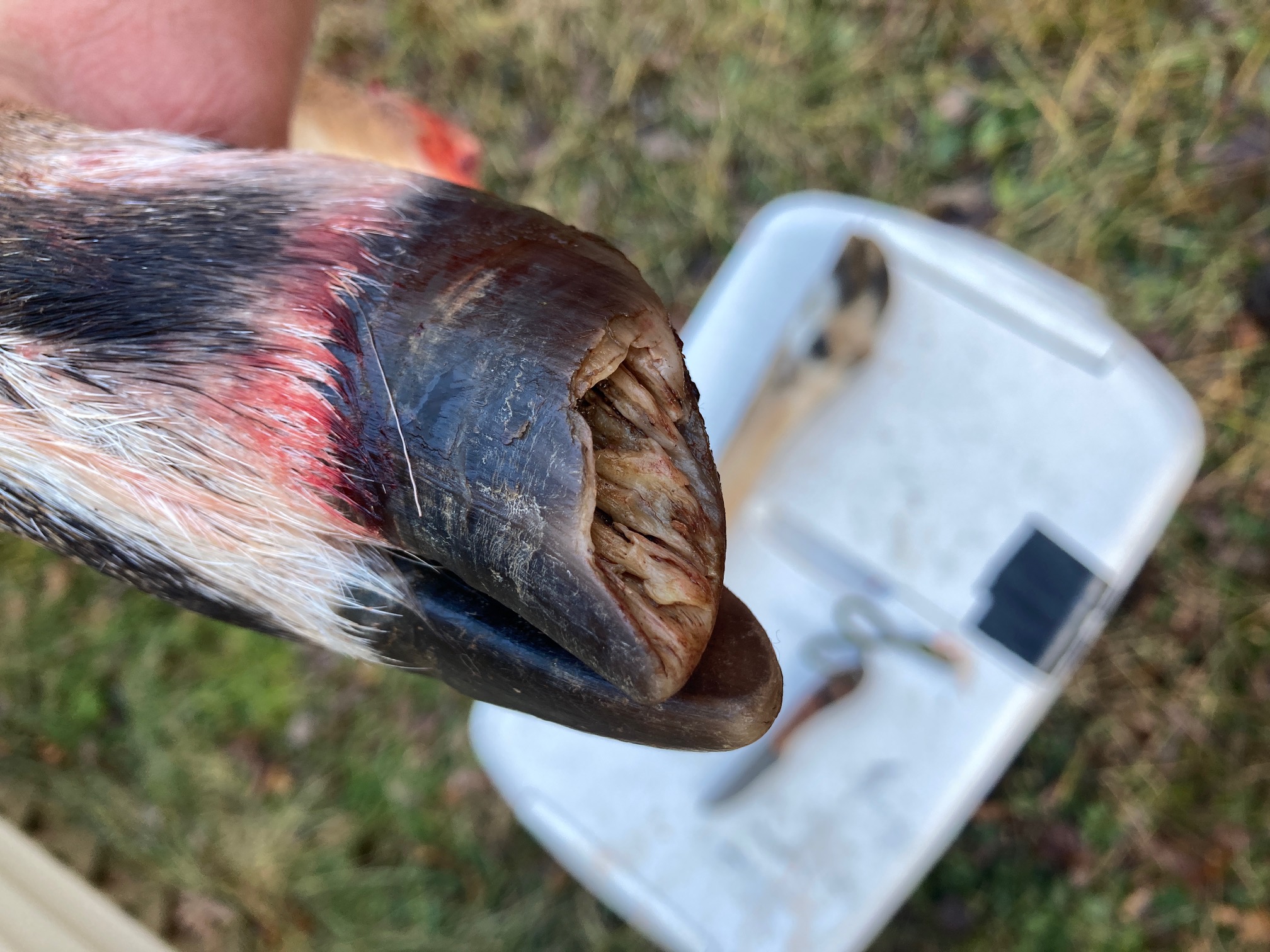
Huge old deer had weirdly rounded hooves and this big rotting hole in one hoof. His entire leg above this was enlarged, probably infected. All of his teeth were gone, completely worn down. His belly was full of grass, because he was unable to browse brush any longer.
How to render bear fat into usable grease
We take a break today from our more usual political commentary and slide easily over into rural culture. Specifically, how to render your luscious bear fat into a usable grease.
Why, you ask?
Because at one time, bear grease was considered a very close substitute for whale oil, which was such a cool product that literally every kind of food, medicine, and flame was made from it. As whales are rightly protected, and bears are bursting at the seams everywhere across America, making a bit o’ bear grease is a neat way to reach back in time.
Many people will use their bear grease for baking, and I have heard and read it is delicious for that purpose, provided it is rendered down carefully. My purpose was and is much more utilitarian: bear grease is going to be a new leather preservative and a lubricant for the patched round balls in my flintlock rifle. I am going to experiment with this unique grease as it was primarily used until the 1880s, when bears were in short supply from unsustainable market hunting, and more modern substitutes, mostly synthetic oils but also including whale oil, were more widely available.
Here are some photos of the simple process I did, using about five pounds of fresh and then immediately frozen fat from a young male bear.
The fat started out as mostly well trimmed, with only slight slices of meat on it. I left those on to see how those slices and the grease would turn out, and if the meat would impart a smell\flavor\aroma to the grease. What I have read is that any meat left on the fat will leave a meaty aroma and flavor to the grease after rendering. Based on the sniffing results of my snoot’s sharp capabilities, I think that is true. That is, meat left on the bear fat will definitely infuse a meaty smell into the grease.
If you intend to cook with the bear grease, then whether or not the meat is absolutely all removed is a question of what you intend to cook in the grease. If it is vegetables and other meats you will be frying in it, then my opinion is the aroma of the bear meat is pleasing and it will not ruin your cooking. If, however, you wish to bake pastries, pie crusts, and breads with your bear grease, then all of the meat ought to be removed. That means every scrap, shaving, and hint of meat should be sliced off the fat.
The fat should be clean, free of debris, leaves, twigs, pine needles, etc. Wash it well. You do not need to dry the fat when you go to render it, as a little water will only help you. It will not be a problem. Cut it with a knife into small chunks. The smaller the better. Some people process their bear fat in a meat grinder, breaking it down into a gooey mess that has no bonds linking the globules. Which makes the fat break down much faster. I think if I had ground up the bear fat, then it would have rendered out in the boiling water in a couple hours.
At first I steamed/ boiled the fat chunks in a second metal bowl immersed in a boiling cauldron over a propane burner. My goal was to be gentle, go slow, and not burn or even cook the fat. For cooks, burned or fried bear fat will definitely impart a certain taste or flavor to the grease. Depending upon your cooking goals, that “cooked” flavor might not be a bad thing. It is a savory smell, and will not go well with pies or sweet pastries.
After six hours on the water, the bear fat had barely begun to melt. So I turned up the heat. The higher the heat under the water, the faster the fat melted. But it was still taking way, way too long. So with about a third of the fat rendered, it was removed from the water and put directly on the lowest flame possible. A little water was added to keep the fat from immediately scalding. Some people put in a lot of water and render the fat on top of it, skimming it off. I did not try that, and it may work better than what I did. It would also be messier.
Direct flame under the pot definitely caused the fat to begin to cook down much faster, and it also began to fry a bit as time went on. The chunks and bits of bear fat began to turn a golden brown. For those interested in rural cuisine, these are called chittlins, much like various types of fried animal fats from Down South. And not just hog skins. Be a bit more creative in your imagining.
Think Larks’ tongues, Wrens’ livers, Chaffinch brains, Jaguars’ earlobes, Wolf nipple chips, Dromedary pretzels, Tuscany fried bats, Otters’ noses, Ocelot spleens, and a host of other fancy Roman cuisine listed in The Life of Brian.
Comparatively speaking, bear chittlins are right up there in that “unusual and fancy” category.
For me, the goal was to maximize the amount of bear grease rendered from the fat, and to minimize the cooking smell or odor imparted to it from the rendering process. This meant reaching a balancing or tipping point where the fat chunks were clearly cooking down substantially, but not completely. Because at completely rendered, the fat is really hot and it is cooking itself. As I wanted to avoid the grease having any kind of food smell, this meant I prematurely ended the whole process, before all the fat was completely cooked down, or even close, to avoid scorching the fat and making the grease smelly.
As you can see from the photo, about 36 ounces of bear grease was obtained from the several pounds of bear fat. Not a bad conversion ratio.
The first photo below shows double boiling; you can see some of the grease appearing. The second photo shows the grease after six hours. Clearly not much progress, even with higher heat. The last photo is after the pot was put directly on a very low flame, with a small amount of water added. Even after this care, the pot had some fat cooked (not burned) onto the bottom. This did give a faint food smell to it. The last photo shows the grease in a refrigerated wide mouth glass pickle jar. It is easy to access in the big jar.
The bucks in my stew
Despite a fabulously successful hunting season in two states, I am still driven to keep going, to hunt more, get out more, sleep under the stars more, freeze my butt off more, adventure more.
Such is that 150,000-year-old drive to hunt that was perfected by our Paleolithic ancestors. It can be all-consuming.
“Why I hunt” has been described a thousand times before, by writers and hunters better than I, and I will not do a good job of describing in turn why I, too, hunt.
All I can say is that we have been a hunting species for 150,000 years, which is much longer than our 5,000-10,000 years as agrarians, 300 years as industrialists, 150 years as communicators, 75 years as eaters-from-tin cans-and-styrofoam, and 25 years as effete metrosexuals too pure to shed blood either to eat or to defend ourselves (our Paleo ancestors survived the harshest conditions; on the other hand, the effete metrosexuals among us will either be speaking Chinese in 25 years or they will just be wiped out for the incoming Chinese colonists).
Hunting is literally in our blood, and yes, I do have that “cave man blood type,” identified as the most primitive of human blood types.
Our teeth are designed to eat meat. I feel best when I eat meat and vegetables, and also when carbohydrates, gluten, and sugary foods are excluded from my intake. Every year I make a lot of jerky, and it lasts me for months. By the time I have eaten it all, I have usually lost between ten and twenty pounds.
Meat is good for me, and it is good for you. Good meat, that is, not abused slave animal meat full of hormones and antibiotics and food colorants. You know, the “meat” most Americans buy at supermarkets. All that crap in the meat is the high health cost of having cheap meat readily available and generically packed.
So accustomed to buying this junky meat have most Americans become, that I regularly hear from old friends that they cannot believe I hunt, because it is so “cruel.” While they post photos to FakeBook of their most recent bloody gourmet meat meal.
As if having someone assassinate their meat for them exonerates of the animal’s death.
So despite killing a bear estimated between 500 and 600 pounds while on a solo wilderness hunt in a very remote designated wilderness area, and having killed three deer during the rifle season, the urge to hunt is still powerful.
My mother kindly sent me some lamb stew last week. It resembled in many ways what the Bible describes as Eisav’s meal prepared for Isaac: Pottage. Which is to say, ragged lumps o’ meat and vegetables.
Tasty stuff.
And all I could think of while eating the delicious lamb stew was how the lumps of lamb reminded me of venison, and how I needed to get back out and score my buck for the season.
So here I was, having a most civilized meal, eating the most tender animal, and all I could see were images of bucks prancing about in my stew when I bent down to take another spoonful.
An outdoor lifestyle, halfway through the season (to hunt is human)
Most of the readers who visit this blog are not outdoors folk. Feats, exploits, and the inevitable tales of woe, cold, and misery from the field would naturally bore, or at best morbidly fascinate, the non-hunter.
Nevertheless, here we go, for the first time here, on a midway retrospective of a singular hunting season still unfolding.
Hunting for most hunters is a way of life literally built into our genes. We do what humans have done since the rise of Homo Sapiens upon Planet Earth: Hunt animals that we eat, wear, and admire. While the Pleistocene ended only 20,000 years ago, it is marked by the full arrival of adept hunter-gatherers who had spent tens of thousands of previous years perfecting their lifestyle.
Humans have been hunters and gatherers for 100,000 years, or 60,000 years, depending upon how long one believes Homo Sapiens has been human.
We have been agrarian for what…10,000 years at the most generous definition of the sedentary lifestyle, but closer to 5,000 years for most humans.
After that, the most modern, most technologically advanced, most “civilized” humans have lived through the Industrial Revolution (400 years), the Technological Revolution (150 years), the Information Revolution (50 years and ongoing). Combined, that’s a total of 600 years out of a total of 60,000 years.
At our core we are all hunter-gatherers. Scratch our civilized surface, and right underneath we are all spear-toting, skin-clad hunters.
To hunt is innately human. Hunting makes us human.
In other words, although many people today look at our current effete, energy-intensive Western lifestyle and think of it as being the peak of human civilization, some of us see this civilization as becoming complacent, detached from the reality of natural resource management necessary to support this modern lifestyle, hypocritical.
When someone believes it is morally superior to have an assassin kill their meat for them than to kill it themselves, you’ve got an unsustainable logical break. Similarly, people want “the government” to protect them, and they want to prevent citizens from protecting themselves, and those same citizens cannot hold the same government accountable when it fails.
Western civilization is full of this weak thinking. In my opinion, Western society is becoming hollow, a shell, full of contradictions.
The hunting lifestyle is a powerful antidote. It is a dose of reality inserted into a cloudy drugged up dream.
So far, this season has been marked by time afield in the most beautiful places in several states with long time friends, new friends, my young son, other kids, and by myself. Like our Pleistocene ancestors, the feeling of the pack on my back and the game-getter in my right hand is about the most natural and satisfying feeling possible.
A number of deer have fallen to various firearms, a Fall turkey, a colorful pheasant; there’s a bunch of photos commemorating the times for the results-oriented. My best moment was late at night, checking a trap with my boy, and finding a large bobcat. There for about four hours, it had really no taste for humans and represented the wilderness in all its wildness.
Catching a bobcat is a real achievement in the world of hunting and trapping, and I confess it was with great mixed emotions that we dispatched it and brought it to Butch at Blue Mountain Taxidermy. Even if a bobcat is again in one of our traps during the short bobcat season, we will release it. One is enough for a lifetime.
One bobcat trophy represents a lifetime of time afield, or 60,000 years.
